As a car owner, I’m sure you know about the catalytic converter, an essential part of your vehicle’s exhaust system. Its purpose is to decrease the harmful pollutants your car emits into the atmosphere. However, the honeycomb-shaped catalyst inside can become obstructed, resulting in reduced performance and, eventually, failure.
In this article, I will explain the reasons behind a clogged catalytic converter and discuss how and when a catalytic converter can unclog itself, which, if all you want to know is, can it? Well, yes, it can, but only in certain scenarios. I’ll also suggest how to prevent your catalytic converter from becoming clogged in the first place.
Can a Catalytic Converter Unclog Itself?
Yes, a catalytic converter can unclog itself, but this depends on how bad the blockage is and what’s causing it. A catalytic converter goes through a process similar to a DPF regeneration at operating temperatures. Suppose the catalytic converter is not hot enough, i.e., when driven on small journeys. In that case, it will start storing hydrocarbons that must undergo the redox reaction. The redox reaction converts harmful exhaust gases, such as carbon monoxide and unburned hydrocarbons, into less harmful compounds, carbon dioxide, water vapor, and nitrogen. When the catalytic converter is hot enough, it cleans and unclogs these unburnt hydrocarbon blockages.
Driving at a higher revolution per minute, such as 4000 – 6000 RPM in a lower gear on a fast road for 30 minutes, should rectify minor blockages. This will heat the catalytic converter and ensure it stays as hot as possible when driving. Driving economically at lower RPM, the catalytic converter will get hot, and a much longer journey will be required to “self-clean.” Expect the car to stutter, and you may visibly see clouds small clouds of smoke coming out of the exhaust as you drive; this is just the blockages clearing under heavy engine load.
However, be aware that if the catalytic converter is too far gone, driving will probably not clear a clogged catalytic converter, and a replacement or removal for cleaning will be the only fix. There are also instances where the blockage is caused by the catalytic converter honeycomb structure melting, usually caused by overfilling and unburnt fuel finding its way into the exhaust. The catalytic converter will overheat when the fuel burns, melting the precious metal honeycomb and causing a blockage. Unfortunately, this cannot be solved by any cleaning method and will require replacement.
How Do You Tell if Your Catalytic Converter Is Clogged?
- To tell if a catalytic converter is clogged is relatively straightforward; you can tell if there is a blockage by checking the amount of exhaust gases exiting the car’s exhaust. There are some other signs that a blockage is starting to form or already has; they include:
- Reduced Engine power – Reduced engine power can indicate the catalytic converter is clogged. If a catalytic converter is blocked, pressure forces waste exhaust gasses back into the engine, reducing the amount of clean air drawn into the cylinder during the next burn cycle and reducing the engine’s performance.
- Poor fuel efficiency – This is not always the easiest to tell, but if you notice a drastic reduction in the miles per gallon, it may indicate an issue. Oxygen sensors pick up an imbalance in the exhaust gasses, telling the ECU to add unnecessary fuel, meaning it runs too rich. It can also cause the car to run too lean, as you guessed; this will cause the exact opposite and give you a reduction in engine performance.
- Trouble starting the engine – Once clogged and then trying to restart the engine, the car will struggle to get going without the right amount of back pressure. However, this would mean the catalytic converter is badly blocked, and you would’ve had other indications first, check the engine light on, etc.
- The smell of Rotten eggs – The eggy smell comes from the sulfur found in fuel; the catalytic converter usually filters this, so it’s odorless, but when it clogs, it can no longer filter the exhaust gasses and unburnt fuel. So, the smell becomes apparent.
- EML on – Either side of the catalytic converter are electrical sensors connected to the car ECU (the brain of the vehicle) called oxygen sensors (AKA O2 sensors or Lambda sensors); if the car catalytic converter becomes clogged, the sensors will pick up an issue in the gasses flowing through the exhaust and can signal engine management light to illuminate on the dashboard. A faulty o2 sensor can signal the EML (engine management light) light to come on.
- Engine misfire – An engine misfire can be caused by a clogged catalytic converter. Waste Exhaust gasses are forced back into the engine because there is no path for them out of the exhaust; this causes the engine to choke and misfire; you can read more about it here.
- Discolored catalytic converter – A blocked catalytic converter will be overheating, turning the metal casing purple. Overheating is the result of unburnt fuel igniting in the catalyst.
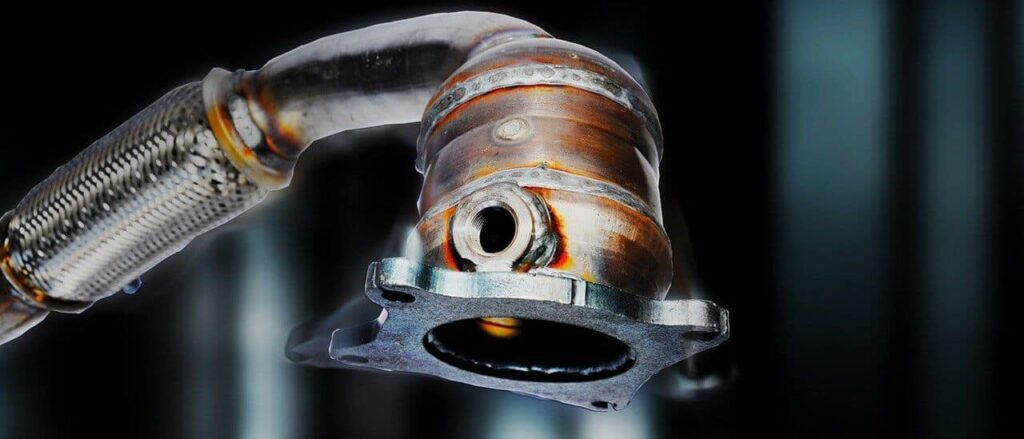
Can a Catalytic Converter Be Unclogged?
A partially clogged catalytic converter can sometimes unclog itself by using a fuel additive and taking the car for a long drive on a fast road. The vehicle must reach operating temperatures and consistently stay there for the catalytic converter to get extremely hot and carry out its ‘self-cleaning’ function of burning off the hydrocarbon blockage. You should note this can’t be carried out on a severe blockage.
It is also possible to manually unclog the catalytic converter by removing it and cleaning the blockage; however, not everyone should do so. You’ll read information online about cleaning it out with a laundry detergent solution. Don’t do it; it’s a big waste of time. It’s easy to damage the honeycomb catalyst of precious metals inside the catalytic converter if you need to know what you are doing. There are services that will remove the catalytic converter and clean it for you; again, this depends on how severe the clog is and the cause of it. It’s not a very common service as the labor and time involved in inspecting can mean it’s cheaper to replace rather than repair.
Why Does a Catalytic Converter Become Clogged?
A catalytic converter can become clogged for several reasons; the most common are:
- Engine misfire – The most common is a misfire developing in the engine caused by faulty spark plugs, failed ignition leads, or a dodgy coil pack. As the fuel is not being burnt correctly, the unburnt fuel is forced into the exhaust system, and the heat inside the catalytic converter will ignite the unburnt fuel, causing the honeycomb structure to melt and clog.
- Faulty O2 sensors – Oxygen sensors detect the oxygen level in the exhaust gasses. The ECU passes this information to adjust the air-to-fuel ratio injected into the engine. When one of the sensors becomes faulty, the incorrect or no reading signal is sent back, asking for extra fuel or taking some out of the next burn cycle, which will cause a blockage.
- Overfilled engine oil – A car overfilled with engine oil can force oil into the exhaust system, creating a carbon and soot buildup in the catalytic converter. An excess amount of soot and carbon deposits will block the exhaust flowing through the pores of the catalytic converter.
- Constant short journeys – Driving constant short journeys means the catalytic converter never reaches operating temperatures where it can burn away hydrocarbons. Hydrocarbons will build up and clog the catalytic converter, although this is relatively easy to clear if caught early.
What Happens if You Drive With a Clogged Catalytic Converter?
As I’ve already covered, the catalytic converter may unclog itself, which will require driving the vehicle. However, if you drive with a badly clogged catalytic converter, it can cause various issues. This could mean the engine stalling while driving or even more long-term damage in severe cases.
If you suspect your catalytic converter is clogged, taking your vehicle to a mechanic as soon as possible is essential. The mechanic can diagnose the issue and determine the best course of action. In some cases, the catalytic converter may need to be replaced, while in other cases, it may be possible to drive the car to clean it out and restore its function. Either way, promptly addressing a clogged catalytic converter is essential to avoid damaging your engine.
Tips for Taking Care of Your Catalytic Converter
Like almost all mechanical components in a vehicle, the best way to care for them is to drive the car. A catalytic converter will take around 15 minutes of driving to get up to operating temperature and then about 15 – 20 minutes to burn the buildup of hydrocarbons stored. Driving for 30 minutes weekly allows the catalytic converter to do its job.
Also, using engine fuel additive poured into the fuel tank, which specializes in helping to clean the catalytic converter, is a good way of helping it clear hydrocarbons even when it doesn’t get up to temperature. Although these can’t be used every time you fill up a vehicle and should be used every few months or so, they work as a good ‘mini service’ to the catalytic converter.
Frequently Asked Questions
Can Driving At High Speeds For A Prolonged Time Unclog A Catalytic Converter?
Driving at high speeds for a prolonged period may improve clogged catalytic converters temporarily, but it is unlikely to clear the blockage fully. A buildup of debris and pollutants results in a blocked catalytic converter, restricting exhaust gas flow and reducing its ability to process them. While high speeds may shift the buildup slightly, it can cause further damage to the catalytic converter or other exhaust parts.
How Long Will A Clogged Catalytic Converter Last?
A clogged catalytic converter’s lifespan depends on the blockage’s severity and how often the car is driven. A catalytic converter can destroy itself with a bad blockage buildup in just a few miles.
What Happens If You Keep Driving With A Clogged Catalytic Converter?
If you continue to drive with a clogged catalytic converter, it can severely damage your engine. The increased backpressure can cause damage to the exhaust system, oxygen sensors, and even the engine itself.
Final Words
A catalytic converter can become clogged for several reasons, but almost every time, it will be a supporting component or engine part that has failed. A clogged catalytic convert can unclog itself if it is a minor blockage caused by a buildup of hydrocarbons. It’s also possible to remove a catalytic converter and clean a blockage, but some blockages caused by unburnt fuel melting the internals cannot be cleaned and will require replacement.
If you sense your vehicle has changed its performance or fuel efficiency, consider the catalytic converter might be the cause and have your car inspected by a mechanic.


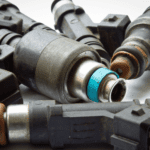
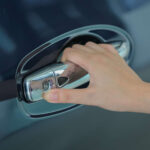


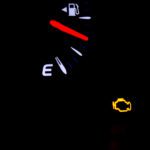
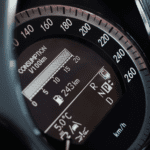
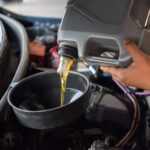

1 thought on “Can a Catalytic Converter Unclog Itself?”